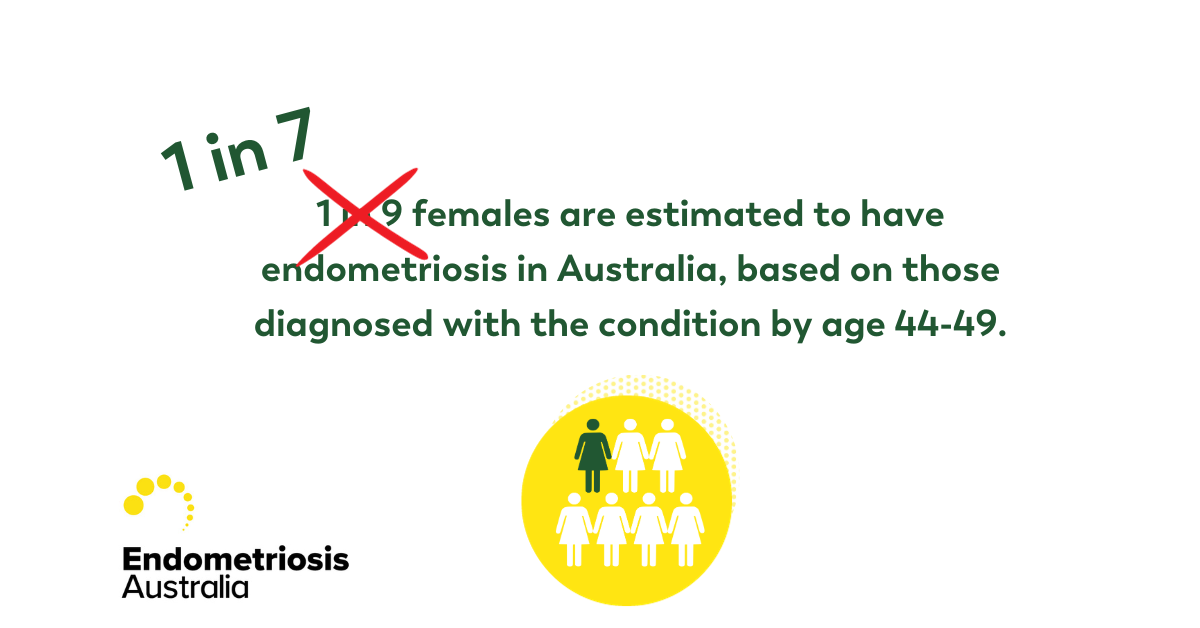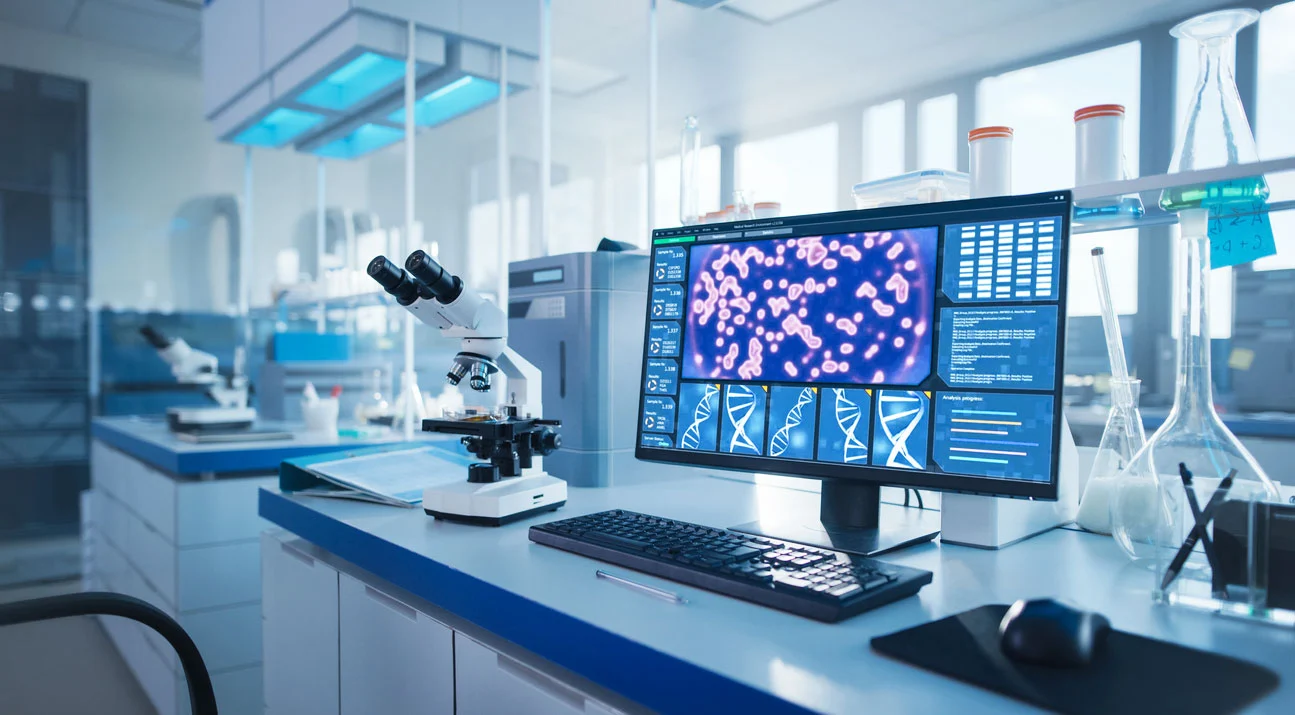In Australia, people with period pain or other gynaecological symptoms can wait on average of 6.4 years before their symptoms are recognised as endometriosis (O’Hara 2020), however, this time to diagnosis has been decreasing recently, most like due to increased awareness from both doctors and patients (Armour 2020). There are many reasons why there is such a significant delay, the main one being that doctors have traditionally relied on surgery to confirm the endometriosis diagnosis and provide endometriosis treatment. Quite simply, there are not enough trained gynaecologists in Australia to provide sufficient laparoscopic surgeries for everyone with endometriosis to obtain a surgical diagnosis.
The European Society of Human Reproduction and Embryology (EHSRE) recently recognised that specialist ultrasounds have value in diagnosis. However, these scans require additional training to properly visualise the signs of endometriosis. Many sonologists and sonographers have not yet been trained in these techniques.
Barriers to an endometriosis diagnosis
1. Endometriosis can run in families, so other family members may have undiagnosed endometriosis and experience period pain. They may not recognise the signs of endometriosis and see period pain as ‘normal’, ignoring or normalising their symptoms.
2. Many people, including doctors, friends and family, think period pain from endometriosis can’t affect young people. In fact, 38% of people with endometriosis experience symptoms from their first period, with the majority of people living with endometriosis pain having their first symptoms before 20 years of age (Ballweg 2004).
3. Sometimes, not all endometriosis symptoms are recognised. Repeated pain from endometriosis deposits breaking down and regrowing in response to menstrual cycle hormones, trigger nerves in the spinal cord (causing endometriosis back pain). When this nerve root is activated, other nerves in the pelvic organs can be sensitised – causing bladder pain, urinary frequency, painful sex, difficulty using tampons, and bowel disturbances. The pelvic floor muscles can also be sensitised – causing stabbing pain, shooting pain and pain down the legs. Finally, the brain can be sensitised to pain – causing fatigue, migraines, nausea, hot flushes, and endometriosis fatigue. Unfortunately, some doctors don’t ask about these symptoms or know how they relate to endometriosis.
4. Periods and pain are still often taboo topics in society. Young people with endometriosis can find others are embarrassed or uncomfortable when they try to explain their symptoms. They get isolated when they are not able to discuss this real aspect of their life, what endometriosis treatment is available, what endo pain relief they need or how to deal with endometriosis and fertility.
5. There has been little investment in research on endometriosis and in women’s health. This means we have few treatments and endometriosis specialists who are expensive and limited. Importantly, one of the significant barriers to understanding endometriosis and developing an endometriosis cure is the struggle to diagnose endometriosis without an invasive surgical procedure.
Can endometriosis be diagnosed without surgery?
Many researchers have tried to diagnose the signs of endometriosis non-invasively using ultrasound and MRI scans, blood, tissue and urinary tests or a combination of these. We reviewed all the scientific papers (more than 15,000!) that assessed these methods to diagnose endometriosis without surgery.
The two best tests were: 1. Endometrioma Ultrasound, when undertaken by a person with specialised skills and performed with a thin ultrasound probe in the vagina, and 2. The radiological test Magnetic Resonance Imaging (MRI), which does not use radiation, but a large magnet to image the inside of the pelvis (Nisenblatt 2016). If these tests detected a positive finding of endometriosis, the diagnosis was very accurate, and the likelihood of endometriosis was very high (95%). If the test did not detect endometriosis, this was not as accurate, and there was still a 40% chance that endometriosis was present if diagnostic surgery was performed.
How can I get a specialist endometriosis scan?
Endometriosis ultrasounds are not the same as a normal pelvic ultrasound, which only looks at the uterus and ovaries. These scans look at seven other signs that can demonstrate endometriosis nodules or endometriosis adhesions outside the reproductive organs. Specialist endometriosis sonographers have had extra training to detect these signs. Without this specialist scan, often endometriosis will be undetected.
These endometriosis ultrasounds take longer than standard gynaecological scans and may cost more. Depending on the provider, they are likely to cost between AU$100 and $400.
Why are ultrasounds and MRI better at detecting endometriosis than blood tests?
Diagnosing endometriosis is tricky. However, improvements in ultrasounds and MRIs have led to high quality images of lesions and adhesions, which previously had to be directly visualised at surgery. This is currently the best minimally invasive way of confirming endometriosis.
Blood tests, on the other hand, detect inflammatory markers that signal there is endometriosis growth. However, because endometriosis lesions are very similar to the body’s own tissue, it is very hard to find markers that are specific to endometriosis and not to other sites of inflammation in the body. Around the world, many researchers continue to look for a specific blood marker to diagnose endometriosis, but we have not had any luck so far.
How can we improve diagnosis?
The Imagendo project works with an amazing group of sonographers, ultrasound specialists, radiologists, gynaecologists, and artificial intelligence experts across Australia and with overseas groups. Seed funding from Endometriosis Australia recently enabled the team to be successful in obtaining a Medical Research Future Fund grant from the Federal government to continue this research over the next three years in a larger group of patients and with more information collected. Using artificial intelligence, Imagendo plans to combine the information gained from specialist endometriosis MRIs and ultrasound scans to see if it can improve the non-invasive diagnosis for endometriosis.
How can I become involved in IMAGENDO?
1. If you have already undertaken a specialist MRI or ultrasound scan, you could really help us if you are willing to donate the images to the Imagendo project (your name and identifying details will be removed). Imagendo’s website has more information, with researchers available to answer your questions.
2. If you are between 18 and 45 years of age, are planning to have surgery for pelvic pain in the near future, and you are in a location where Imagendo researchers work, you may be able to arrange to have a specialist MRI scan and/or a pelvic ultrasound scan without cost. Imagendo will also ask you to complete two very short questionnaires. Just email: endostudy@adelaide.edu.au for more information or go straight to the website. You can also read more about this project on their Facebook page.
3. The Endometriosis digital platform – Endozone, has recently been released. This platform brings together information, resources, and research. Endozone hopes to let everyone, including doctors, be better informed about endometriosis, highlight that more information is needed about periods and what is normal, and also how to better manage pain.
Find out more about endometriosis diagnosis, treatment and support here.
Author:
Professor Louise Hull, Endometriosis Australia Clinical Advisory Committee
References
– 1. O’Hara R, et al. Managing endometriosis: a cross-sectional survey of women in Australia. J Psychosom Obstet Gynaecol. 2020:1-8.
– Armour, M., Sinclair, J., Ng, C. H. M., Hyman, M. S., Lawson, K., Smith, C. A., & Abbott, J. (2020). Endometriosis and chronic pelvic pain have similar impact on women, but time to diagnosis is decreasing: an Australian survey. Sci Rep, 10(1), 16253. https://doi.org/10.1038/s41598-020-73389-2
– ESHRE Endometriosis Guideline Development Group. Endometriosis Guideline of European Society of Human Reproduction and Embryology. 2022. www.eshre.eu/guidelines
– Ballweg ML. Impact of endometriosis on women’s health: comparative historical data show that the earlier the onset, the more severe the disease. Best Pract Res Clin Obstet Gynaecol. 2004;18(2):201-18.
– Nisenblat V, Bossuyt PMM, Farquhar C, Johnson N, Hull ML. Imaging modalities for the non-invasive diagnosis of endometriosis. Cochrane Database of Systematic Reviews 2016, Issue 2. Art. No.: CD009591.











